Early Period, and Archaic/ early classical GREECE
1/50
There's no tags or description
Looks like no tags are added yet.
Name | Mastery | Learn | Test | Matching | Spaced |
|---|
No study sessions yet.
51 Terms
What was the Cycladic Period?
The earliest cilviization in Greece, characterized by the development of marble Figurines and pottery. There isnt any written recordsfrom this period, and it primarily existed from around 3000 to 2000 BCE.
What was the main archaeological find in the early Cycladic period?
Female violin shaped figurinesmade of marble, often associated with fertility.
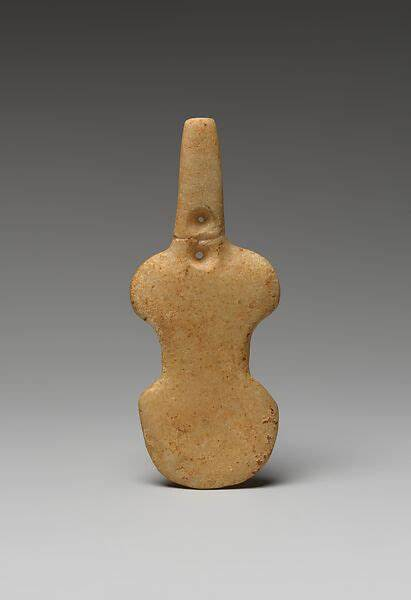
What were the finds from the second phase of the early Cycladic period?
Characterized by more complex figurines.
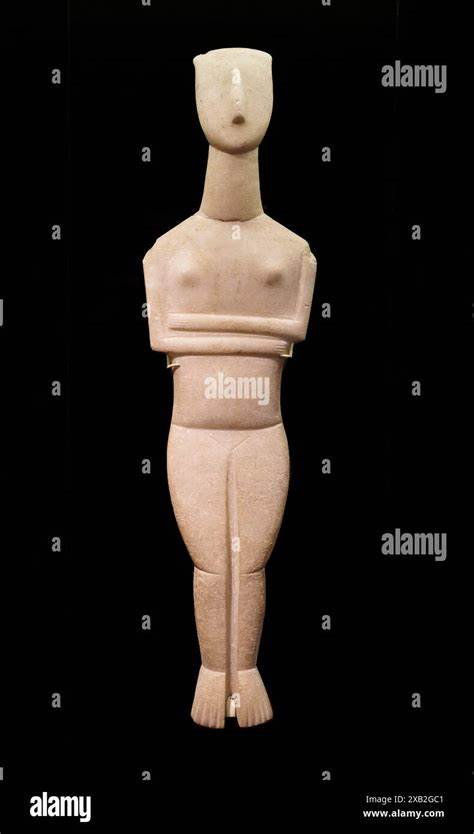
Why did the Cycladic period end?
Factors that may have come into play include environmental changes, trade shifts, and cultural transitions that led to the rise of the Minoan civilization.
Who is Minos
A legendary king of Crete known for the Minotaur myth and for establishing a powerful civilization.
What is the Minotaur myth?
The myth of the Minotaur involves a creature that is half-man and half-bull, born from a union between Queen Pasiphae of Crete and a sacred bull. It was kept in the Labyrinth designed by Daedalus, where it was eventually slain by the hero Theseus.
Who were the Minoans?
An ancient civilization that developed on the island of Crete, known for their advanced architecture, art, and trade networks.
What advanced architecture was found?
Palaces complexes with several stories. These complexes had light wells/ shafts creating a more brighter and open atmosphere aswell as flush toilets and baths. The interiors had huge colourful frescoes and wall paintings, all depicting nature and minoan life. Some famous examples is the huge mural of dolphines and bull - leaping.
What was so significant about the Palaces in Crete.
They served as government centers, royal residence, temple, and storehouse. The west side housed state rooms and stores huge jars containing grain, oil, and wine (may have represented taxes for the king..?). The east side was the living quaters
Who was Arthur Evans?
A British archaeologist who discovered the Minoan civilization by excavating the palace at Knossos in Crete, significantly advancing the study of ancient Greek history.
What is a Phaistos disk?
A disk inscribed with symbols found in the Minoan palace of Phaistos, believed to be a form of writing or art. It is considered one of the most significant archaeological discoveries related to the Minoan civilization.
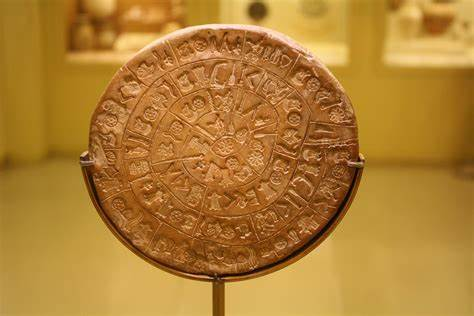
Whats Linear A
Linear A is an even older script, used by the Minoans on the island of Crete.
Key differences:
Linear A is older (used before Linear B).
Linear A is still a mystery — we haven’t figured out how to read it yet.
Linear B writes early Greek, but Linear A does not. We don’t know what language Linear A represents.
Whats lLinear B
Linear B is an old way of writing used in ancient Greece, around 3,000 years ago.
It was used mainly to keep records — like lists of food, animals, and supplies — by people called the Mycenaeans.
It uses symbols (kind of like letters) to write down sounds.
It's one of the oldest forms of Greek writing.
We can read it today because it was decoded in the 1950s.
What is a fresco
A technique of mural painting on wet plaster, commonly used in the Minoan and later Greek civilizations. It allows for bright colors and intricate designs that are integral to understanding their art and culture.
What is the significance of bull leaping?
Bull leaping in Minoan culture was a ritualistic spectacle symbolizing strength, agility, and spirituality. It likely held religious significance, honoring deities associated with fertility and nature. Bulls were considered sacred, and the ritual may have symbolized humanity's connection to the divine. Performed in ceremonial spaces like palace courtyards, it blended athleticism with spiritual devotion, reflecting the importance of bulls in Minoan society and art.
Whats Rython?
A rhyton is an ancient drinking vessel, often ornately designed, typically shaped like an animal's head or a horn. It was used for drinking or pouring liquids during ceremonies, such as libations. The term comes from the Greek word rhuton, meaning "flowing," reflecting its purpose in rituals.
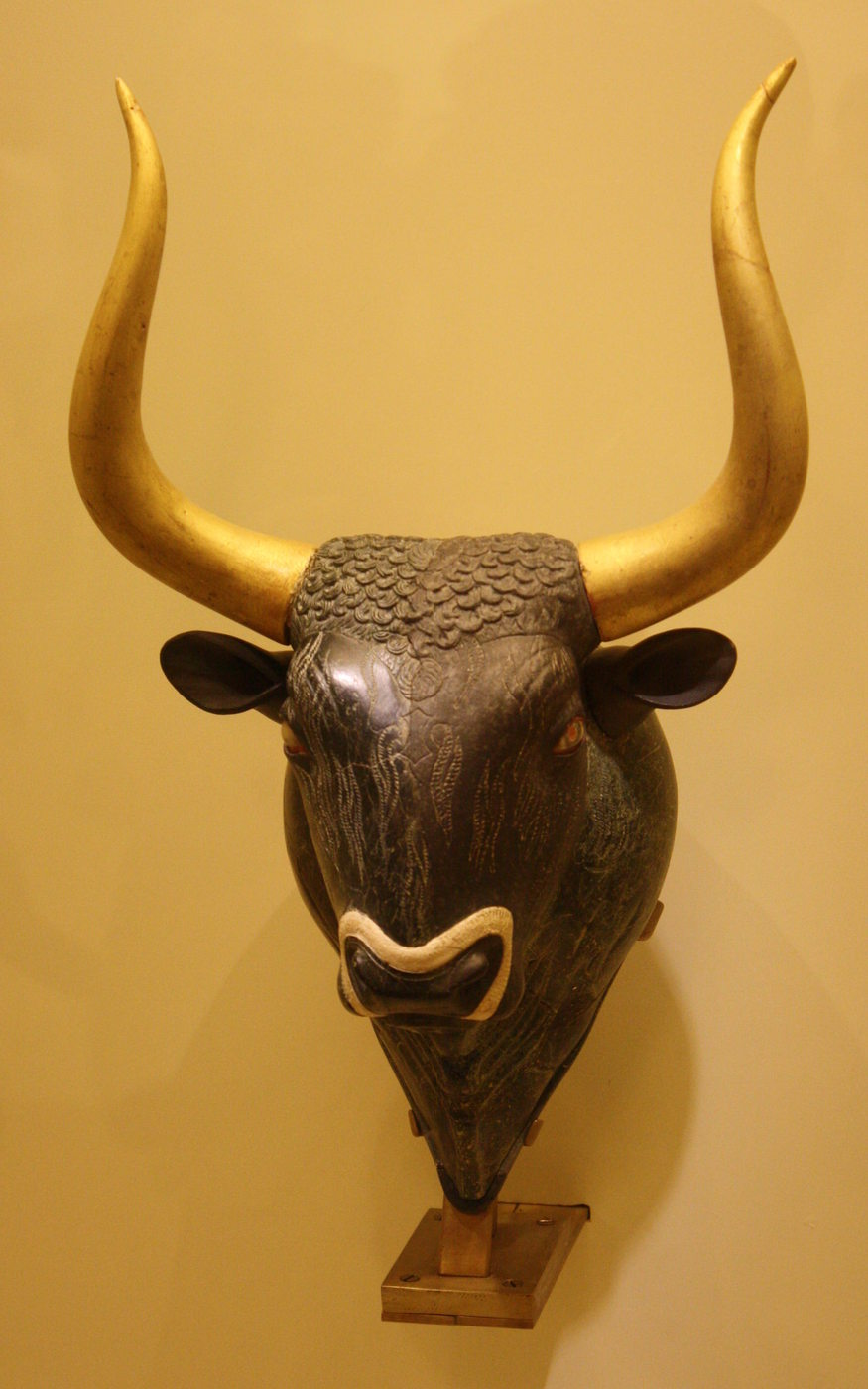
Whats a Labrys?
A labrys is a double-headed axe associated with Minoan culture and mythology, symbolizing power and authority. It is often linked to female deities and was used in rituals, reflecting the importance of this symbol in Minoan religion.
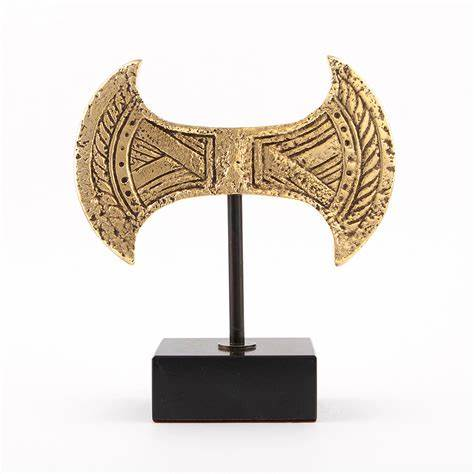
Whats a Thessalocracy? and how does it relate to the minoans?
A thalassocracy (sometimes spelled Thessalocracy) refers to a maritime empire or a state that exercises control primarily through naval power and dominance over sea routes. The term originates from the Greek words thalassa (sea) and kratos (power).
The Minoans are often considered one of the earliest examples of a thalassocracy. Based on Crete, their strategic location in the Aegean Sea allowed them to dominate maritime trade routes during the Bronze Age. They established outposts, controlled key trade networks, and influenced surrounding regions through their naval prowess. This dominance contributed to their cultural and economic prosperity, as well as their ability to spread Minoan art, technology, and religious practices across the Mediterranean.
Whats the Atlantis? And its significance to greek culture?
Atlantis is a legendary island mentioned by Plato, representing an advanced civilization that supposedly existed and subsequently sank into the ocean. Its story reflects themes of hubris and the ideal society in Greek philosophy.
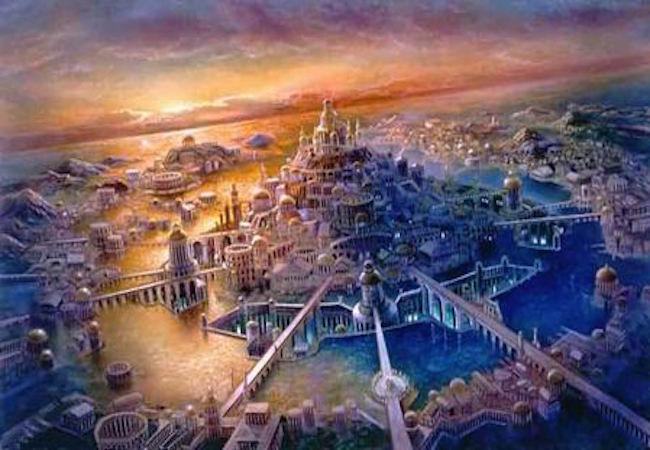
Why did the Minoan Civilization fall?
1. Natural Disasters: The eruption of the Santorini (Thera) volcano around 1600 BCE is believed to have caused widespread destruction. The eruption likely triggered tsunamis and ash fallout, severely impacting Minoan settlements and agriculture.
2. Mycenaean Influence: After the natural disasters, the Mycenaeans from mainland Greece may have taken advantage of the weakened Minoans. Evidence suggests that the Mycenaeans gradually took over Minoan palaces and integrated their culture.
3. Economic Decline: The combination of natural disasters and external pressures could have disrupted trade networks, which were vital to the Minoan economy.
How did the Myceneans rise?
The Indo-Europeans, invaded the Greek mainland. Within 500 years, they conquered all of southern Greece. They settled on fertile lands and built fortified cities and palaces, which served as both defensive structures and administrative centers.
The city of Mycenae became their political hub, symbolizing their power and wealth. From here, they controlled surrounding regions and extended their influence through trade and conquest. Their palaces, such as those in Mycenae and Tiryns, demonstrated advanced architecture and served as hubs for governance and commerce.
Trade was vital to the Mycenaean economy, connecting them to civilizations like the Minoans, Egyptians, and Hittites. They exported goods such as pottery and weapons and imported valuable materials like gold and ivory. This trade brought immense wealth and helped solidify their dominance in southern Greece, creating a powerful and prosperous civilization
What is Archean?
Was language that some of the indo-european peoples spoke and it was the basis for several later languages, influencing both vocabulary and grammar in the Greek language.
Who is Homer?
An ancient Greek poet traditionally said to be the author of the epic poems the Iliad and the Odyssey, which are about the famous trojan war. This was inspired by the stories being passed down from generation to generation by song.
Whats the Lion Gate
A monumental entrance to the citadel of Mycenae, featuring a relief sculpture of two lionesses. It served as a symbol of Mycenaean power and architectural skill, demonstrating advanced engineering techniques.
What are Cyclopean blocks?
Large stone blocks used in Mycenaean architecture, believed to be moved and assembled by Cyclopes due to their immense size. They exemplify the engineering capabilities of the Mycenaean civilization.
Who was H. Shliemann
A German archaeologist known for excavating the site of Troy in the 19th century, asserting that he had discovered the historical locations described in Homer's epics. Illiad was seen as a fiction but he wanted to prove that wrong. He found lots of tombs and beileived he found Agamennon but his claims have been met with skepticism among scholars.
Who is king Agamemnon?
A legendary Greek king of Mycenae, central to Homer's "Iliad" and credited with leading the Greek forces during the Trojan War. His story intertwines themes of heroism, tragedy, and fate.
What are the grave circles A and B?
Ancient burial sites in Mycenae containing rich artifacts and multiple graves, believed to belong to Mycenaean elites. They provide insight into the funerary practices and social hierarchy of the time.
What was the significance of death masks?
Death masks were important artifacts in Mycenaean culture, often made of gold and used to honor the deceased. They represented the individual's likeness and were placed over the face of the deceased during burial, reflecting beliefs about the afterlife and ancestral veneration.
What are Tholos tombs? and what do they show us about mycenea culture?
Tholos tombs are circular beehive-shaped burial structures from the Mycenaean period, often built into the ground and characterized by their monumental architecture. They reflect the wealth, power, and complex funerary practices of Mycenaean elites, indicating a sophisticated society with strong beliefs in the afterlife.
What was different about Mycenae palaces compared to Minoan?
Mycenaean palaces were heavily fortified and built for defense, while Minoan palaces were more open, artistic, and focused on culture and trade.
What is a Megaron?
Definition: A Megaron is an architectural structure, typically consisting of a large rectangle room with a central hearth, surrounded by a porch and columns; it was a crucial part of Mycenaean palace complexes and served as a ceremonial and functional space
What was the diffrence between the illiad and the odyssey
The Iliad = War drama
The Odyssey = Epic road trip with monsters
What was the bronze age collapse
The Bronze Age Collapse, around 1200 BCE, was a period of widespread societal breakdown across the Mediterranean and Near East. Major civilizations like the Mycenaeans, Hittites, and Minoans fell, trade networks crumbled, and literacy declined. The causes are debated but likely include a mix of natural disasters, invasions (like those by the mysterious "Sea Peoples"), internal rebellions, and economic instability
What were the Dark Ages?
The Dark Ages refer to the period in Greece and the broader Mediterranean following the Bronze Age Collapse, roughly from 1200 to 800 BCE (The early Period). This era was characterized by a decline in population, loss of writing systems, and fewer archaeological artifacts, leading to limited historical records.
When was the rise of city states and the age of colonization?
The Early Classical Period (800-400BCE)
Why was there a rise in city states?
City-states and colonization grew because of more people, more trade, better tools, and the need for new land and resources. As villages grew and trade expanded, cities needed to govern themselves, and because of Greece’s geography, they developed into independent city-states instead of one united country.
What was the archaic period?
The Archaic Period in Greece, spanning from 800 to 500 BCE, was marked by the establishment of city-states, advancements in art and architecture, and the development of the Greek alphabet, leading to a flourishing of culture and trade.
Who were the Phoenicians and ehy are they significant to Greece?
The Phoenicians were skilled traders and sailors from the eastern Mediterranean who had a big impact on early Greece. They shared their alphabet, which the Greeks adapted into their own writing system. Through trade, they brought new goods, ideas, and art to the Greeks. Their success at sea also inspired the Greeks to explore and set up colonies around the Mediterranean. Overall, the Phoenicians helped shape Greek culture through writing, trade, and seafaring.
Whats Trireme?
A trireme was a fast and powerful ancient Greek warship used from the 500s to 300s BCE. Its name comes from its design—three rows of oars on each side, rowed by about 170 men. It also had a sail for travel, but relied on oars in battle for speed and control. At the front was a bronze-tipped ram used to smash into enemy ships. Triremes were light, quick, and ideal for naval warfare. They were especially important to Athens, helping it become a major sea power during wars like the Persian and Peloponnesian Wars.
What was the Persian Empire
The Persian Empire was a vast ancient empire that existed from the 6th to the 4th centuries BCE, known for its impressive administration, diverse cultures, and significant conflicts with Greece, particularly during the Greco-Persian Wars.
Who was Cyrus the Great
Cyrus the Great was the founder of the Persian Empire, known for his exceptional leadership and tolerance towards the cultures of the peoples he conquered. He is credited with establishing a model of governance that respected local customs and religions, which helped ensure the stability and expansion of the empire.
What was the Ionian Revolt
The Ionian Revolt was a rebellion that took place from 499 to 494 BCE, where the Ionian city-states in Asia Minor revolted against Persian rule. This uprising was significant as it sparked the larger conflict between Greece and the Persian Empire, leading to the Greco-Persian Wars.
Who was Pheidippides
Greek Mesenger who ran from the Marathon to Sparta to seek help for battle, snf ran back to tell them thwir response. The spartans were to anxious to help due to religious reasosn.
What was the Marathon Battle?
The Battle of Marathon in 490 BCE was fought between the Athenians and the invading Persian army on the plain of Marathon, near Athens. Despite being outnumbered, the Greeks used smart tactics to win a decisive victory. This battle boosted Greek confidence, preserved their independence, and became famous enough that the modern marathon race is named after the legendary run of a messenger who brought news of the win to Athens.
Who was Xerxes?
The sun and successor of Darius (king of persia known for the marathon invasion). He led the Persian forces during the Second Persian invasion of Greece and is known for his massive army that faced the Greeks at battles such as Thermopylae and Salamis.
What happened in the battle of Thermopylae
The Battle of Thermopylae in 480 BCE was a clash between Greek city-states and the Persian Empire led by Xerxes during the Persian Wars. The Greeks blocked a narrow mountain pass to stop the much larger Persian army and held them off for three days. Eventually, the Persians found a secret path around the pass, surrounded the Greeks, and defeated them. Although the battle was a Persian victory, it delayed their advance and gave other Greek forces time to prepare, making it an important moment in the war.
What happened in the Battle of Salamis?
The Battle of Salamis was a key naval victory in 480 BCE where the Greek fleet trapped and defeated the larger Persian navy, which weakened the persians whole campaigns
What god did the Olympic games honour and why?
The Olympics honored Zeus because he was the most important god in Greek religion, and the games were a religious festival held at a sacred site dedicated to him.
Who is Thales of Miletus
Thales of Miletus was one of the first Greek thinkers to explain the world using logic and observation, not mythology, and is often called the first philosopher and scientist.
Whats an Acropolis?
An acropolis is a sacred hilltop in a Greek city, and the Acropolis of Athens is the most famous, built in the 5th century BCE as a center of worship and pride, especially honoring the goddess Athena. The acropolis was important because it was a natural fortress, a holy place near the gods, and a symbol of the city’s power all in one high, visible spot.